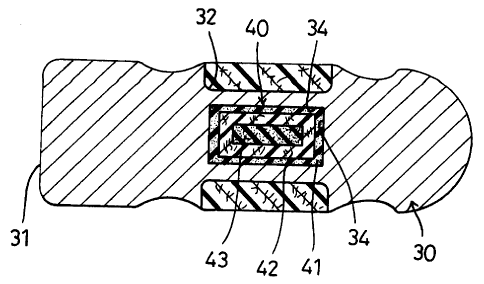Some of the information on this Web page has been provided by external sources. The Government of Canada is not responsible for the accuracy, reliability or currency of the information supplied by external sources. Users wishing to rely upon this information should consult directly with the source of the information. Content provided by external sources is not subject to official languages, privacy and accessibility requirements.
Any discrepancies in the text and image of the Claims and Abstract are due to differing posting times. Text of the Claims and Abstract are posted:
| (12) Patent: | (11) CA 2353059 |
|---|---|
| (54) English Title: | HAMMER |
| (54) French Title: | MARTEAU |
| Status: | Deemed expired |
| (51) International Patent Classification (IPC): |
|
|---|---|
| (72) Inventors : |
|
| (73) Owners : |
|
| (71) Applicants : |
|
| (74) Agent: | BULL, HOUSSER & TUPPER LLP |
| (74) Associate agent: | |
| (45) Issued: | 2005-04-12 |
| (22) Filed Date: | 2001-07-13 |
| (41) Open to Public Inspection: | 2003-01-13 |
| Examination requested: | 2001-07-13 |
| Availability of licence: | N/A |
| (25) Language of filing: | English |
| Patent Cooperation Treaty (PCT): | No |
|---|
| (30) Application Priority Data: | None |
|---|
A hammer includes a composite material handle having a connecting
portion formed on one end of the composite material handle. A head is
encircled in the connecting portion of the handle and has a flat working face
formed on one end. An annular groove is defined in a middle portion of the
head to receive the connection portion of the handle. A through hole is
transversely defined in the middle portion of the head and communicates with
the annular groove. A cushion core is securely inserted in the through hole in
the head to absorb the shock generated when the hammer is used.
Note: Claims are shown in the official language in which they were submitted.
Note: Descriptions are shown in the official language in which they were submitted.

For a clearer understanding of the status of the application/patent presented on this page, the site Disclaimer , as well as the definitions for Patent , Administrative Status , Maintenance Fee and Payment History should be consulted.
| Title | Date |
|---|---|
| Forecasted Issue Date | 2005-04-12 |
| (22) Filed | 2001-07-13 |
| Examination Requested | 2001-07-13 |
| (41) Open to Public Inspection | 2003-01-13 |
| (45) Issued | 2005-04-12 |
| Deemed Expired | 2006-07-13 |
There is no abandonment history.
| Fee Type | Anniversary Year | Due Date | Amount Paid | Paid Date |
|---|---|---|---|---|
| Request for Examination | $200.00 | 2001-07-13 | ||
| Application Fee | $150.00 | 2001-07-13 | ||
| Maintenance Fee - Application - New Act | 2 | 2003-07-14 | $50.00 | 2003-06-25 |
| Maintenance Fee - Application - New Act | 3 | 2004-07-13 | $50.00 | 2004-07-06 |
| Final Fee | $150.00 | 2005-01-31 |
Note: Records showing the ownership history in alphabetical order.
| Current Owners on Record |
|---|
| LIN WU, LI-TU |
| Past Owners on Record |
|---|
| None |